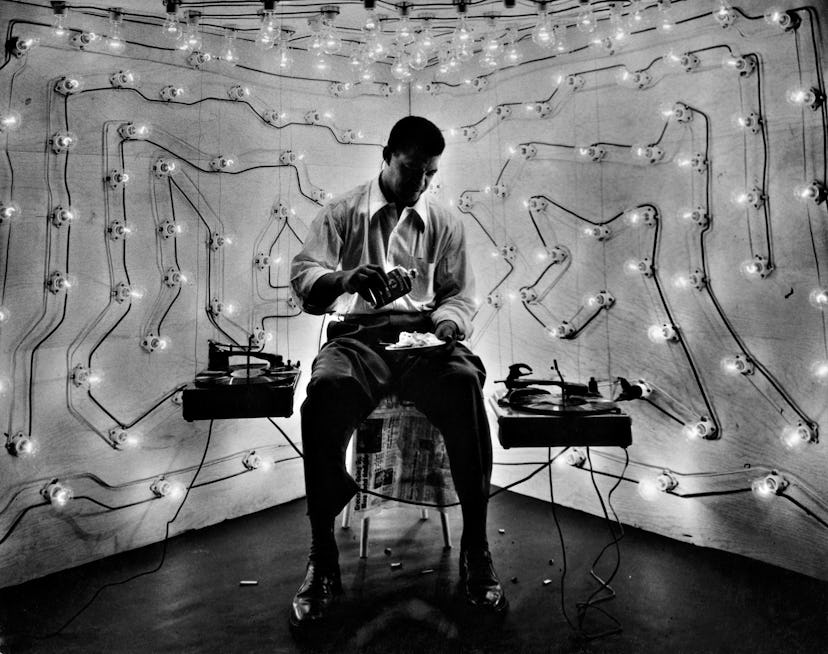Gordon Parks and Ralph Ellison in Harlem

Gordon Parks and Ralph Ellison both grew up in middle America, but they found their roots in the artistic and literary circles of Harlem in the ’40s and ’50s. Each saw art as a means to create social change, and a way for America to begin to understand the black experience. So, in 1948, they teamed up to examine the Lafargue Clinic, New York’s first nonsegregated psychiatric center, as a case study of sorts of their neighborhood. Their illustrated essay, “Harlem Is Nowhere,” of course suggested the very opposite of its title—the neighborhood’s injustice was in fact systemic throughout all of America. It’s a theme they’d return to four years later upon the publication of Ellison’s first novel, “Invisible Man,” when Parks shot Ellison in a hideaway reminiscent of his protagonists’s, stocked with 1,369 lightbulbs, for Life magazine. Their relationship, on the other hand, only came to light this year, and is now at the center of both an exhibition at the Art Institute of Chicago and a book titled “Invisible Man: Gordon Parks and Ralph Ellison in Harlem,” published this month by Steidl. See their shared visions, here.
1
“Untitled,” Harlem, New York, 1952.
Photo by Gordon Parks, courtesy of the Gordon Parks Foundation and “Invisible Man: Gordon Parks and Ralph Ellison in Harlem,” published by Steidl.
2
“Untitled,” Harlem, New York, 1948.
Photo by Gordon Parks, courtesy of the Gordon Parks Foundation and “Invisible Man: Gordon Parks and Ralph Ellison in Harlem,” published by Steidl.
3
“Harlem Neighborhood,” Harlem, New York, 1952.
Photo by Gordon Parks, courtesy of the Gordon Parks Foundation and “Invisible Man: Gordon Parks and Ralph Ellison in Harlem,” published by Steidl.
4
“Harlem Newsboy,” Harlem, New York, 1943.
Photo by Gordon Parks, courtesy of the Gordon Parks Foundation and “Invisible Man: Gordon Parks and Ralph Ellison in Harlem,” published by Steidl.
5
“Soapbox Orator,” Harlem, New York, 1952.
Photo by Gordon Parks, courtesy of the Gordon Parks Foundation and “Invisible Man: Gordon Parks and Ralph Ellison in Harlem,” published by Steidl.
6
“Untitled,” Harlem, New York, 1952.
Photo by Gordon Parks, courtesy of the Gordon Parks Foundation and “Invisible Man: Gordon Parks and Ralph Ellison in Harlem,” published by Steidl.
7
“Untitled,” Harlem, New York, 1952.
Photo by Gordon Parks, courtesy of the Gordon Parks Foundation and “Invisible Man: Gordon Parks and Ralph Ellison in Harlem,” published by Steidl.
8
“Homeless Couple,” Harlem, New York, 1948.
Photo by Gordon Parks, courtesy of the Gordon Parks Foundation and “Invisible Man: Gordon Parks and Ralph Ellison in Harlem,” published by Steidl.
9
“Invisible Man Retreat,” Harlem, New York, 1952.
Photo by Gordon Parks, courtesy of the Gordon Parks Foundation and “Invisible Man: Gordon Parks and Ralph Ellison in Harlem,” published by Steidl.